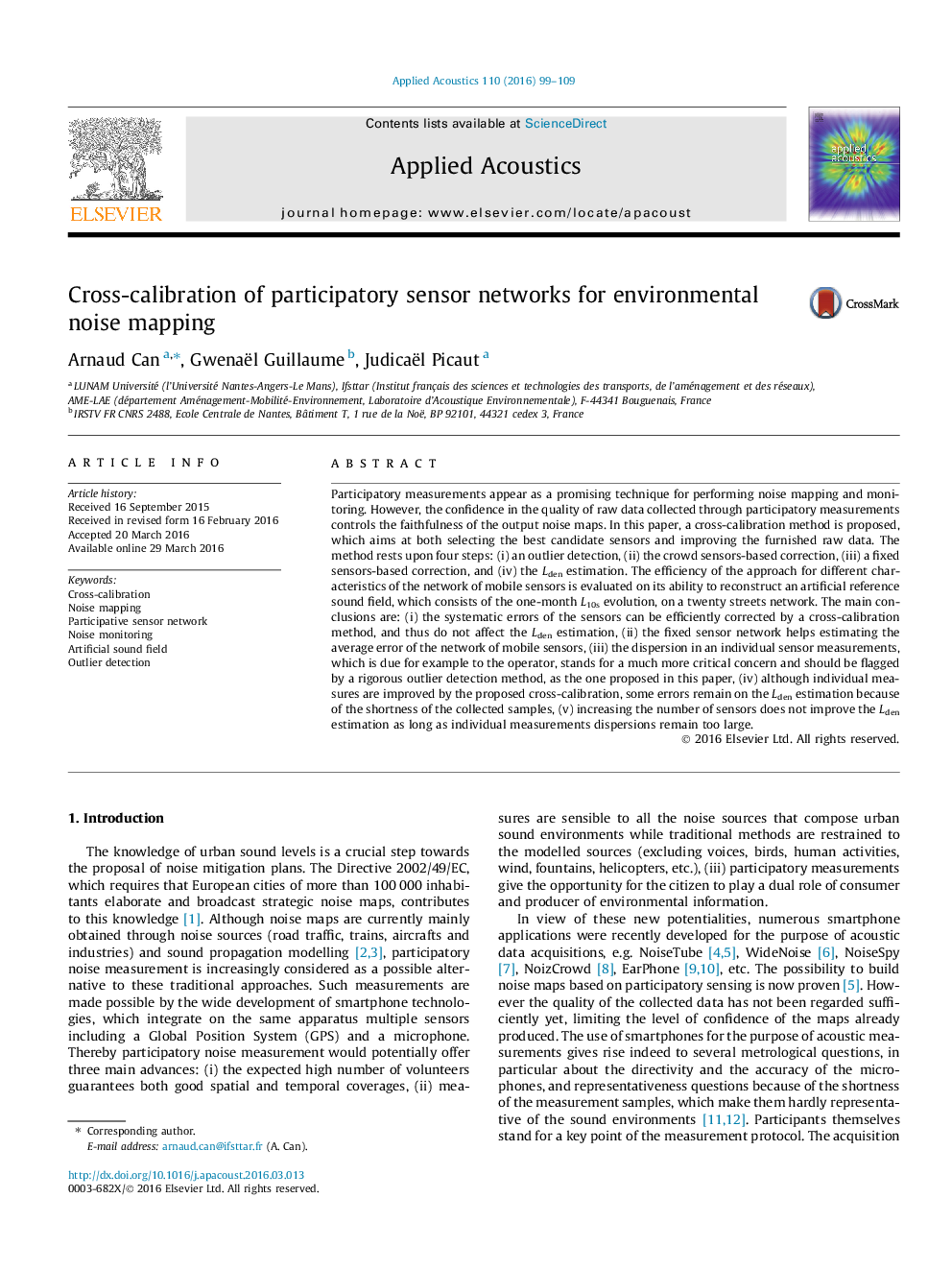| Article ID | Journal | Published Year | Pages | File Type |
|---|---|---|---|---|
| 7152490 | Applied Acoustics | 2016 | 11 Pages |
Abstract
Participatory measurements appear as a promising technique for performing noise mapping and monitoring. However, the confidence in the quality of raw data collected through participatory measurements controls the faithfulness of the output noise maps. In this paper, a cross-calibration method is proposed, which aims at both selecting the best candidate sensors and improving the furnished raw data. The method rests upon four steps: (i) an outlier detection, (ii) the crowd sensors-based correction, (iii) a fixed sensors-based correction, and (iv) the Lden estimation. The efficiency of the approach for different characteristics of the network of mobile sensors is evaluated on its ability to reconstruct an artificial reference sound field, which consists of the one-month L10s evolution, on a twenty streets network. The main conclusions are: (i) the systematic errors of the sensors can be efficiently corrected by a cross-calibration method, and thus do not affect the Lden estimation, (ii) the fixed sensor network helps estimating the average error of the network of mobile sensors, (iii) the dispersion in an individual sensor measurements, which is due for example to the operator, stands for a much more critical concern and should be flagged by a rigorous outlier detection method, as the one proposed in this paper, (iv) although individual measures are improved by the proposed cross-calibration, some errors remain on the Lden estimation because of the shortness of the collected samples, (v) increasing the number of sensors does not improve the Lden estimation as long as individual measurements dispersions remain too large.
Related Topics
Physical Sciences and Engineering
Engineering
Mechanical Engineering
Authors
Arnaud Can, Gwenaël Guillaume, Judicaël Picaut,
